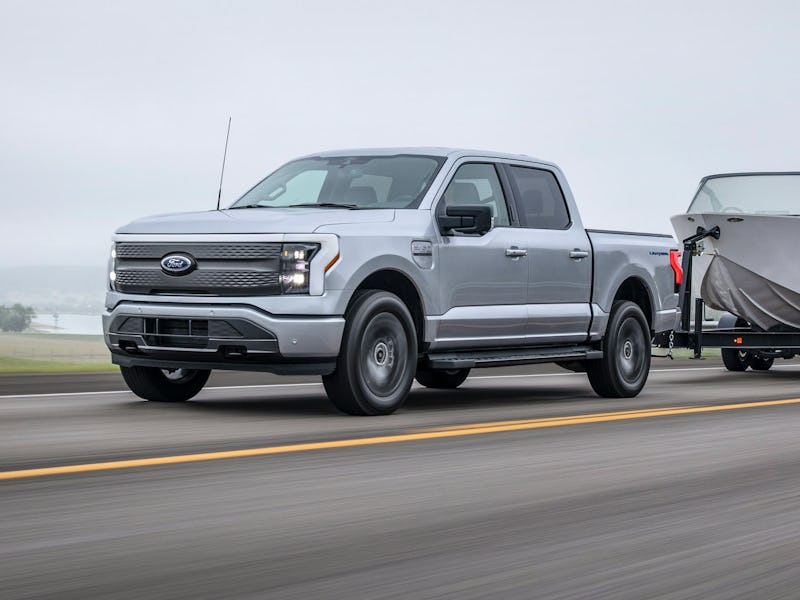How To Take Advantage of New EV Tax Credits in the U.S.
Rules outlined in the Inflation Reduction Act just made it a lot more difficult to claim the full $7,500 tax credit on new EVs, but a few vehicles still qualify.

The Inflation Reduction Act, a bill to address climate change and economic inflation, passed last summer, but its impact on EVs is just starting to kick in.
In this sweeping legislation are key changes to the Clean Vehicle Credit that paid back almost $7,500 on new EV purchases, drastically reducing the number of eligible vehicles in an effort to prioritize domestic-focused battery sourcing and production.
How did EV tax credits change in the U.S.?
The signing of the newest Inflation Reduction Act brought about a series of new requirements for the $7,500 tax credit on newly-purchased “clean vehicles” (Plug-in hybrid, fully electric, or hydrogen fuel cell). Two primary changes have been enacted, focused on the acquisition of minerals and the assembly of batteries. Each of these changes affects half of the $7,500 tax credit, meaning a vehicle meeting only one of the two requirements will still be eligible for a $3,750 credit.
For an electric vehicle to qualify for the first half, a certain percentage of its critical minerals — key minerals used in battery manufacturing — must be “extracted or processed” in the United States or any of the 21 countries the U.S. has a free trade agreement with. Or they have to be recycled in North America.
This percentage will increase over the next two years. Currently, vehicles will need 40 percent of their critical minerals to be sourced by these means. By the end of 2026, 80 percent of these materials will need to be sourced from compliant methods.
Many new EVs, like Volkswagen’s ID.7 sedan, will no longer qualify for a $7,500 tax credit under new rules outlined in the Inflation Reduction Act.
A portion of the batteries themselves will also need to be manufactured or assembled in North America. This percentage will start at 60 percent for vehicles placed in service in 2024 or 2025. By 2028, 100 percent of a vehicle’s battery components will need to be manufactured in North America.
In addition, the vehicle’s “final assembly” — the last steps before a vehicle is shipped to an importer or dealer — must be completed in North America.
Because of this, electric and hybrid vehicles which source their batteries from Chinese manufacturing have been made ineligible for the tax credit as of April 18. Even vehicles purchased beforehand will not be eligible if they are received after this date, meaning you’ll be out of luck if you’re waiting for delivery on a vehicle that’s been made ineligible for the credit.
For more details, the full text can be found in Section 13401 of the H.R.5376.
Which EVs qualify with the new tax credit rules?
With these sweeping changes, relatively few electric vehicles still qualify for the $7,500 tax credit. You can check here, but the list is pretty short.
Currently, only 10 distinct electric vehicles are eligible for the full credit:
- Cadillac Lyriq
- Chevy Blazer EV
- Chevy Bolt
- Chevy Bolt EUV
- Chevy Equinox EV
- Chevy Silverado EV
- Ford F-150 Lightning (Standard and Extended Range)
- Tesla Model 3 Performance
- Tesla Model Y AWD (Standard and Long Range)
- Tesla Model Y Performance
Along with two plug-in hybrids:
- Lincoln Aviator Grand Touring PHEV
- Chrysler Pacifica PHEV
In addition, seven distinct EVs and PHEVs are eligible for a partial credit of $3,750, including both Jeep PHEVs.
What do new EV tax credits mean for buyers?
For anyone looking to purchase a new EV, this will either noticeably limit your options, or at least add a hefty upcharge to most foreign options.
Vehicles from BMW, Hyundai, Genesis, Rivian, and Volkswagen are no longer eligible for a tax credit, so buyers looking to take advantage of the credit will primarily be limited to vehicles from well-established American manufacturers such as Chevy, Ford, and Tesla.
Bad news for anyone looking to get a discount on Hyundai’s sleek Ioniq 6 electric sedan.
Right now, the best option is likely to wait on your new EV purchase if you’re not interested in any of the vehicles on the list. Many manufacturers appear to be investing in North American battery manufacturing, and this shift will likely mean that the selection will slowly begin to open back up after more manufacturers get on board with the new requirements.
The changes to the tax credit system already appear to be motivating EV makers to invest in U.S.-based battery manufacturing.
Rivian previously received a $1.5 billion incentive package to construct a plant in Georgia, which will focus on both vehicle and battery production. Along with this, seventeen other domestic battery facilities have been announced, and 2022 saw $73.6 billion invested into U.S. electric vehicle manufacturing.
Volkswagen already anticipates the ID.4’s compliance with these new requirements and has submitted the necessary documentation to the IRS. The ID.4 is currently being manufactured in Chattanooga, and VW has plans to build a battery plant in Ontario, Canada with direct access to raw materials and renewable energy.
This article was originally published on